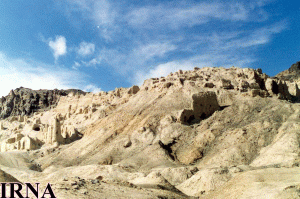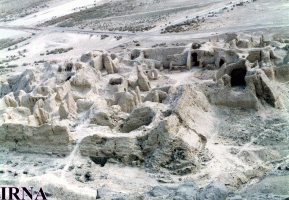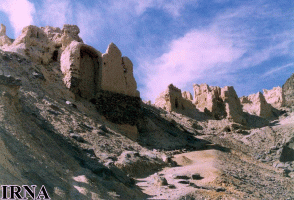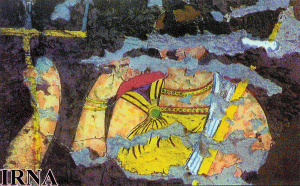|
|
|
http://www.payvand.com/news/05/nov/1027.html
It is the only natural height left behind in Sistan area, where a palace, fire temple, pilgrimage center called Khajeh Mehdi and graveyard reminiscent of the past are still in good condition. The trapezoid-shaped basalt lava, situated 609 meters from the sea level, with a diameter ranging from two to 2.5 kilometers stands 17 kms to the southwest of Zabol in the middle of Hamoun Khajeh Lake. The complex was identified for the first time by a British archaeologist in 1916. Later, an Italian archaeologist conducted excavation at the site from 1925-1929. The result of his excavation was later listed in a book dubbed "Sagestan", which was about the eastern Iran in ancient time and the history of its archaeology.
Meanwhile, another Italian archaeologist and architecture conducted limited excavations at Khajeh Mountain some 40 years ago and published his findings in a book named "Iran's Architecture and Khajeh Mountain Monuments". Besides, 11 monuments were unearthed at the site by the former provincial Cultural Heritage Department in 1991 and the relevant maps were drawn. The architectural decorations used in some of the castles of the complex are similar to the Greek architecture, including voluted capitals of columns made in Doric style and small flowers such as nenufar (lotus) copied on Achaemenid art, while some of the elements look like Mesopotamian art. Khajeh Mountain Complex is greatly respected by followers of the three ancient faiths of Islam, Christianity and Zoroastrianism and taken as a holy center. The mountain has been named after the mausoleum of Khajeh Mehdi, one of the sympathizers of Alavi rulers, which is situated on this mountain. It is also called with several other names including Nour, Mo'oud and Bateni.
In ancient times, in particular after the advent of Zoroaster, the site was known as the place of birth and advent of Zoroaster and the savior of the faith, "Soshians". To the Christians, the significance of the complex is related to the belief that upon Christ's birth at the Lord's house three clergies standing on this mountain and watching the light emanating from this divine prophet acknowledged their faith in Jesus Christ. Khajeh Mehdi's mausoleum, the graveyard dating back to the post-Islamic era and the windless chamber at Khajeh mountain render the entire monument sacred to all Muslims, so that it is visited by pilgrims during religious and national festivals as well as holidays. "Kohan-Dezh" and "Kafaran Castle" marking the great Sassanid and Ashkanid (Parthian) civilization are among the most important remains from the past historical eras.
The mural painting of three clergies or kings, the painting of the God of Victory seen on a horse, the image of king, queen and Parthian dignitaries are some of the remaining art objects marking the great civilization of Iran. In the course of excavations conducted at Khajeh mountain and the relevant castles, a number of 40-meter-high walls made of unbaked mud bricks and dating back to 1,000 years ago have been unearthed. The city of Zabol in Sistan area with a 400,000 population
is located to the southeast of the provincial capital of Zahedan.
|



